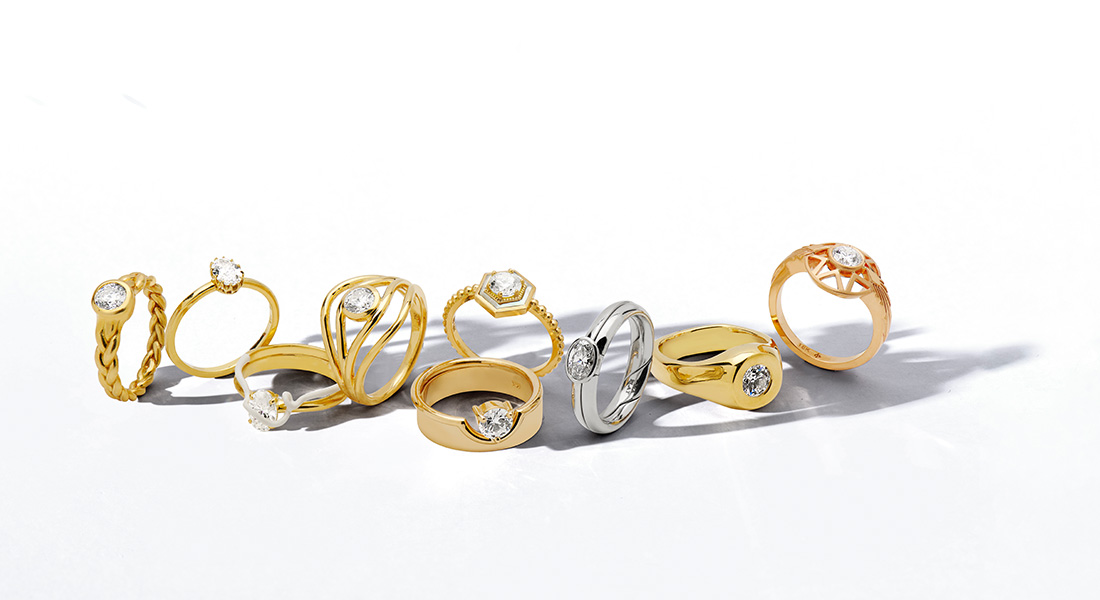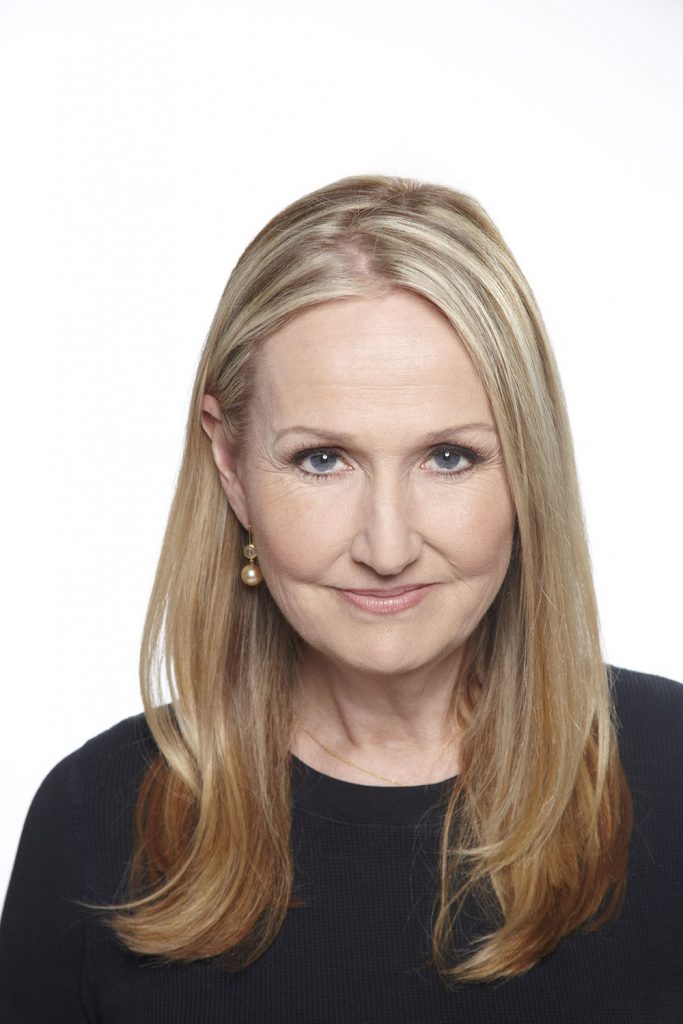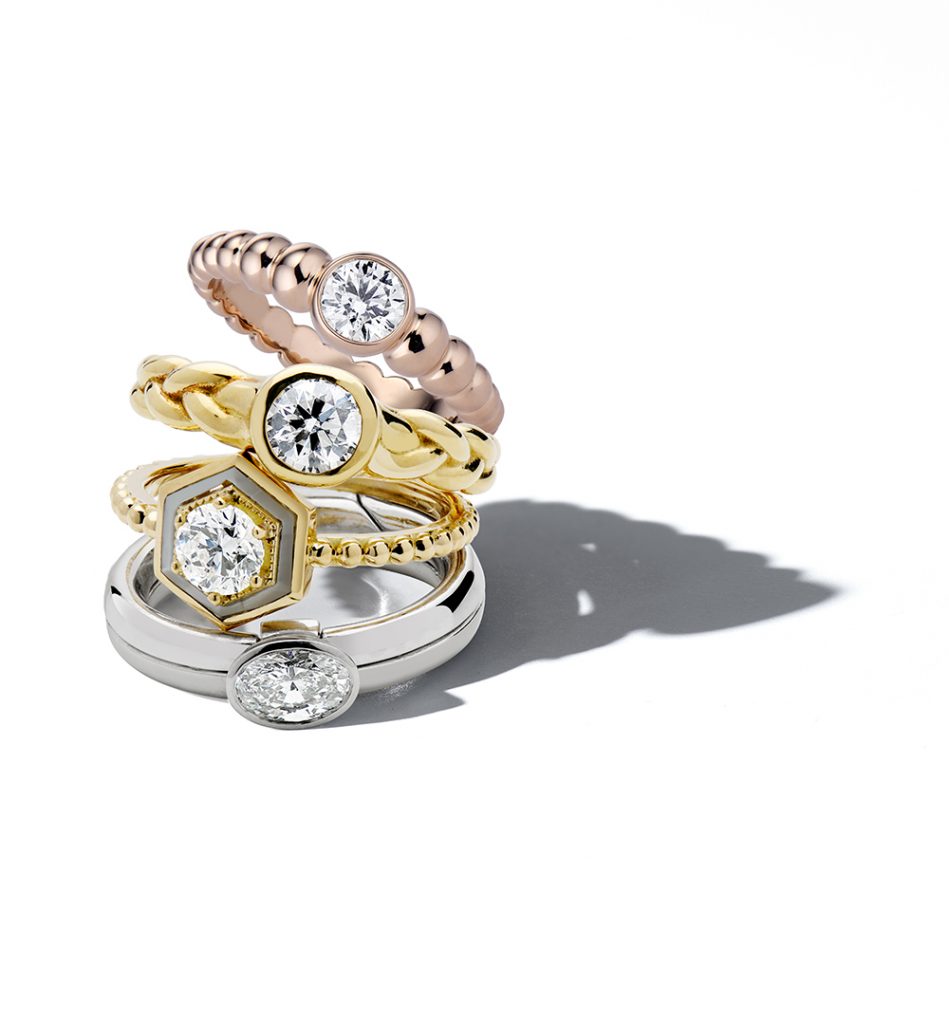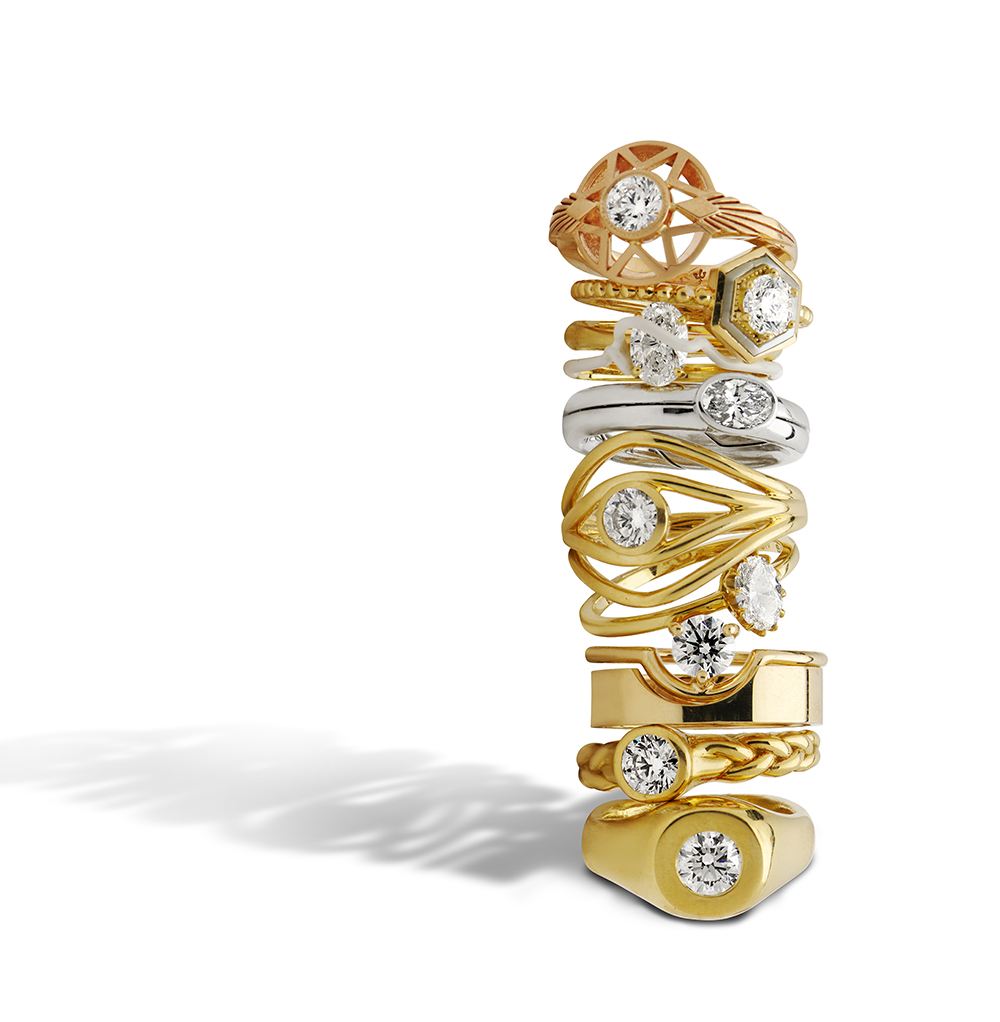SALLY MORRISON,Director of PR, Natural Diamonds for De Beers Group, speaks about the working on the design projectTen Ten Botswana, involving 10 top jewellery designers. Conceptualised and realised during the pandemic, the collection is symbolic of commitments, bonds and hope.
Earlier this year, an all-female tribe of designers – emerging and established – handpicked by Sally Morrison, Director of PR, Natural Diamonds for De Beers Group, unveiled their creations for the Ten/Ten Botswana project. The novel design project sees independent jewellery brands Almasika, Aurora Lopez Mejia, Bea Bongiasca, Harwell Godfrey, Lola Fenhirst, Marla Aaron, Michelle Fantaci, Platt Boutique, Pamela Love and Wwake reimagining the timeless symbol of love and commitment. “It seemed right to go to women designers since they are still fundamentally under-represented in our industry, although they are overwhelmingly the end users. Also, the designers each had a following in the US — where the project was available,” adds Sally.
The assortment of provenance-based engagement rings crafted using diamonds ethically and sustainably sourced from Botswana, are very cool and artful. Each ring bears the signature aesthetics of the maker – and it is at an attainable price. The programme is supported by the De Beers Group, in partnership with Blue Nile.
We caught up with Sally Morrison to learn more:
What sparked the idea for Ten/Ten Botswana?
It was all developed during lockdown. I was talking to a lot of designers, to colleagues in Botswana, friends in the media – and it was clear that the pandemic was going to affect all of us in different ways. We also felt that there was a younger generation of people who would come out of the pandemic fundamentally changed, but who would still fall in love and want a beautiful and iconic symbol of their commitment to another person. So, it was about advocating for diamonds from Botswana in collaboration with a directional group of designers. It gave us all something to look forward to!
When did the collaboration get underway? And what challenges did the lockdown throw up?
There was no single ‘start date.’ I was chatting to some of the designers in April-May, and we were initially just throwing around ideas. The project was developed very provisionally, because Botswana was also still locked down and we really didn’t know if we could get the diamonds to the US in time to allow for jewellery production. We knew that rough had been delivered from one of our mines the day that lockdown happened in Botswana, but we didn’t know if there was enough of the right quality of material in the parcel, because no one had yet looked at it! So that made it exciting…and nerve racking.
When the country did open up, and we knew that we could move forward, then the race was on. The designers started working, without knowing the sizes or measurements of the diamonds that they would receive. The diamonds were cut and polished in Botswana, and finally made it through grading and into the US by August. Everyone was working under pressure.
The Ten/Ten all-female jeweller roster is diverse. Do tell us more.
We tried to get as many as diverse aesthetics as possible, and we tried to find designers who were not highly identified with the bridal category. This was about trying to present as many different approaches as we could and truly offering something fresh. That is difficult to do — engagement rings are the most iconic of any piece of jewellery— and they have already been done well in so many ways. We also selected people who could produce their own jewellery, because all production had to be done quickly.
How has partnering with Blue Nile (for e-tail) bolstered this initiative?
Blue Nile has been a terrific partner, because they are an online reference for brides-to-be. Their audience allowed us to reach a wide range of consumers, and let us tell them the story of Botswana sourced diamonds and to tell the stories of the designers themselves. Currently, the rings are only shoppable in the US, but in the future, we would love to make projects like this more widely available. I also personally believe that as an industry, we have to work hard to present the absolute “best-in-class” at an attainable price point to compete with everything else in the competitive set. We need to remember, as marketers and retailers, that a diamond engagement ring is the ‘only’ meaningful piece of jewellery that some people will buy – and in most cases, the most expensive thing they will ever purchase (except, maybe, a car). We owe it to them to make this most iconic of pieces the most special, desirable and emotionally satisfying purchase; however modest the price tag.
Here’s what some of the designers had to say about the Ten/Ten Botswana collaboration:
- Lauren Harwell Godfrey (Harwell Godfrey)
“It was a chance to make something in a similar vein, but at an amazing price point. As a person of African heritage, I love the idea of helping people from a country where diamonds have contributed to a culture and set up its people.”
- Bea Bongiasca
“As someone with their own brand who has always had to find their own way, it is exciting to collaborate with such a big name in the jewellery world.” She has created two rings that can be worn together or separately. “One funky, the other more customary.”
- Lola Oladunjoye (Lola Fenhirst)
“Bringing craftsmanship and design into the mid-market is a welcome challenge. Who knows, we may be able to change the template of what an engagement ring should be. As a person of Nigerian descent, one of the most gratifying aspects of being involved with this project is being able to shine a light on the economic liberation story of the De Beers partnership with Botswana.”
- Catherine Sarr (Almasika)
“My jewels communicate from a cultural aspect, but I truly believe that provenance is equally important because it comes with a trust in us. A responsible value chain has been at a core of Almasika since our inception.”
- Michelle Fantaci
“I wish that the Botswana story were replicated in all places that have similar precious resources. It’s a star success story.”
- Aurora Lopez Mejia
“The words are what I’m documenting in my art and my jewellery. It’s the carrier of the message.” She has chosen a single worn engraved on the shank – LOVE. “It’s the most important word, especially right now,” she says.




